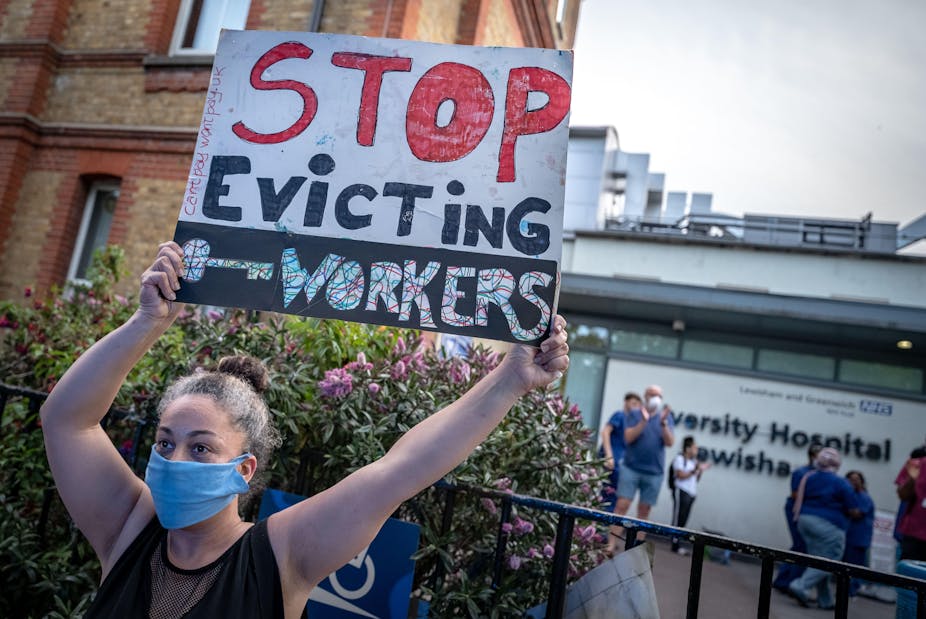The COVID-19 pandemic has been the most serious public health crisis in a century. It resulted in governments taking unprecedented powers to regulate people’s social lives, and undertaking substantial fiscal interventions to cushion the impact on people’s finances and the broader economy. Some have suggested that the experience would be so profound that the pandemic would prove a “turning point in history” that heralded a significant change in the way societies are organised and economies are run.
However, implementing a profound change in public policy is likely to be difficult unless it chimes with public opinion. So, has there been a significant change in public attitudes in the wake of the pandemic? We have pursued this question in Britain by analysing three surveys that were conducted between summer 2020 and summer 2021, each of which replicated questions that had been administered before the pandemic on the British Social Attitudes (BSA) survey, a high quality random probability survey conducted annually since 1983.
One key question we address is whether the pandemic changed attitudes towards inequality, welfare and the role of the state. The disease particularly affected those living in deprived communities and stimulated debate about inequality in British society. The public health measures threatened the livelihoods of those in hitherto secure jobs, and thus may have changed their attitudes towards welfare provision. Meanwhile, the expansion of public spending may have led some to reassess how big the state should be in future.
In practice, there are only limited signs that any of this has happened. True, there has been a modest increase in an already relatively widespread level of concern about inequality. On average in our three surveys conducted during the pandemic, 64% agreed that “ordinary people do not get their fair share of the nation’s wealth” – up from 60% across the three surveys conducted between 2017 and 2019. At the same time, two-thirds (66%) agreed that “there is one law for the rich and one for the poor” – up from 58% between 2017 and 2019.
However, the experience of the pandemic did not necessarily stimulate a greater willingness to take action on inequality. At 43%, the proportion who agreed that the “government should redistribute income from the better off to the less well off” was little different from the 42% who expressed that view in the years before the pandemic.
There was certainly no dramatic change in attitudes towards welfare. For example, in our pandemic surveys 44% disagreed that “many people who get social security don’t really deserve any help”, little different from the 42% who did so beforehand. Similarly, 40% disagreed that “most people on the dole are fiddling in one way or another” – much the same as the 39% who did so before the pandemic.
Long-term shift
However, although public attitudes towards welfare may not have shifted much during the pandemic, they are still very different now from those in evidence a decade earlier. Between 2002 and 2012, just 29% disagreed that many social security recipients are not deserving of help, while only 27% disagreed that most people on the dole are fiddling. After an era when most people had been relatively unsympathetic towards welfare benefits, the public mood had already become much more supportive well before the pandemic set in.
Much the same is true of attitudes towards taxation and spending. Following the financial crash of 2007-8, on average just 35% said that the government should “increase taxes and spend more on health, education and social benefits”. However, the public had already reacted against the curbs in public spending initiated by the Conservative-Liberal Democrat coalition of 2010-15. By 2017-19 the proportion who thought taxes and spending should increase had reached 57%.

That figure fell somewhat during the pandemic – to 51%. But the swing might be thought to be modest compared with the scale of public spending during the pandemic - and indeed is likely to be in place for some time yet. In any event, the marked increase in public spending that occurred during the pandemic was accompanied by a public mood that was already looking for some expansion in the role of the state.
The pandemic shows little sign of being a “turning point” in public opinion. Rather, it is better regarded as barometer of existing social and political attitudes in Britain. The inequality of the pandemic stimulated debate because many were already concerned about inequality. Increased welfare provision reflected a more sympathetic public mood that was already in place. Meanwhile, the public were already seeking more government spending on public services.
Rather than having to respond to a new public mood, the challenge facing policy makers in the post-pandemic era will be to identify how best to respond to a rather different public mood that has already been in place for some time.

